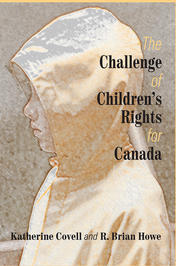Family Law


Children’s rights are the legitimate claims of children that their developmental needs be provided for. This is recognized in the UN Convention on the Rights of the Child (hereafter the Convention). The Convention regards childhood as a protected part of the life cycle, and prescribes the role of governments in ensuring optimum conditions for meeting children’s developmental needs. In fact, the articles of the Convention are designed specifically to fill children’s developmental needs. The Convention tells us that children have a fundamental right to environments as free from social toxins as they are from physical toxins. In the Convention, which we discuss in detail in the next chapter, children are acknowledged to be independent bearers of provision, protection, and participation rights. Whereas the Convention upholds the importance of parenting and family life, it makes clear that children are not to been seen as, nor in any way treated as, parental property. The challenge of children’s rights, then, is twofold.
First, we must provoke a cultural shift in which children are no longer regarded or treated as parental property. The shift requires recognition that it is not desirable for individual parents or families to bear the full costs of, or the full responsibility for, children. In turn, this requires recognition that accepting social responsibility for children means accepting interventions into child rearing. At this time we speak of social responsibility for children, yet we have few supports for child rearing. As mentioned earlier, we continue to leave children in severely toxic environments because we cling to beliefs about parents’ rights. We have children whose development is seriously compromised by prenatal exposure to toxic substances because we cling to beliefs about women’s freedoms. We must rid ourselves of these ideological obstacles that prevent us from taking children’s rights seriously. It is the children on whom we must focus, and it is what is in the best interests of the child’s development that must guide our policies and practices in all social contexts.
Second, we need a shift in policies and practices to lessen the social toxins in children’s environments, and to provide immunizations for resilience where we are unable to effect environmental changes. We need real supports for families and parenting. We need child-friendly workplace policies, recreation opportunities, and neighbourhoods. We need child-centred schools. We need legislation that allows for the best interests of children in custody disputes, in high-risk environments, or in trouble with the law to be the only criterion of decision making. We need to take children’s rights seriously.
In this book, we describe key areas in which we believe changes are necessary to meet the challenge of children’s rights. Our focus is on issues of relevance to the developmental needs of children in general. As such, the consideration of the needs of special groups of children such as refugees, children with disabilities, and ethnocultural minorities, albeit of great importance, are beyond the scope of this book. The book is organized as follows. In chapter 2, we describe Canada’s obligations to children under the Convention, a landmark document that Canada signed in 1990. We do so in reference to the substantive rights and guiding principles of the Convention and to the system established for the implementation of children’s rights. We then turn to an examination of key areas in which change is needed. In each of chapters 3, 4, and 5 after reviewing Canada’s progress through the 1990s, we note inconsistencies between children’s rights as promised by the Convention, and current practices and policies. We describe the importance of these inconsistencies with reference to the literature from developmental psychology and children’s needs.
We make specific recommendations for changes in our policies, institutions, and social environments in chapter 6. We believe that meeting the challenge of children’s rights will, over time, have the same impact on social toxins as have our health policies on physical toxins. Over generations, as we have identified their causes, we have eliminated many diseases with a bifurcated attack. First, where possible we have altered environmental conditions, for example increasing sanitation, and improving air quality. Secondly, we have developed immunizations, for example against polio and diphtheria, to prevent harm from environmental toxins that we have been unable to eliminate otherwise. Of course we have not been able to eliminate all toxic substances or all diseases. We still use antibiotics to react to illness when we have been unable to prevent it. It is time to take a comparable approach to socially toxic environments. Where possible, we can alter children’s environments to prevent developmental pathologies. We can provide children with the supports and positive environments that act as immunizers in promoting resilience to the adversities in life that often are unpredictable, yet experienced by many of us. And we can react quickly and efficiently with appropriate treatments when we have been unable to provide protections.


